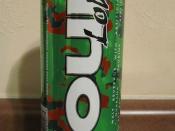Aristotle outlined four causes that established the end purpose of an object or action. They are as follows: the material cause, the efficient cause, the formal cause and the final cause. Aristotle believed that the final cause was different from the other three causes and was the most important of the four.
Objects, whether they are animate or inanimate tend to have all four of the causes although it is not necessary to have all four. Actions only tend to have a couple of causes: The efficient cause and the final cause.
Aristotle believes that you can only truly understand something when you know everything about it. As you learn more about an object you begin to understand it better. For example when looking a picture it is useful to know it was done by an artist, however, it is more useful to know a painter produced it, and even more useful to discover Picasso painted it as opposed to any other painter.
Each of the four causes answer a "why?" question. Aristotle believed that to gain a complete answer we needed to know the answer to each of the four causes. But not all objects will have four causes. For example a universal triangle has a final cause that states its definition but it does not have an efficient cause as it does not come into being but it purely exists. Nor does it have a final cause and it does not have a goal or end.
The material cause answered the question "What is it made of?" by defining the material. An example of an inanimate object could be a chair. Its material cause could be wood, glue, and nails. An animate object such as a fox would have fur, skin, organs and bones etc., as it's material...


